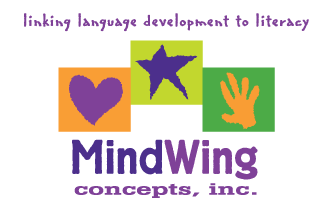Secure Checkout. FREE SHIPPING for Continental U.S. Orders over $60.
Menu
-
- Home
-
About Us
-
The Approach
-
Linking Language & Literacy
-
Professional Learning
-
Learning Resources
-
SHOP
-
Blog
-
- About MindWing
- Our People
- Contact Us
- Your Account
- Login
-
United States (USD $)

Secure Checkout. FREE SHIPPING for Continental U.S. Orders over $60.
Tech Tuesday: Tell Stories with Pocoyo
by Sean Sweeney January 31, 2017 3 min read
 Pocoyo is a British-Spanish television series featuring the adventures of a young boy and his friends: Pato the duck, Ellie the elephant and Loula, a dog. I first came upon the Pocoyo series accidentally, as one of its videos was contained in the terrific ABC apps from Peapod Labs.
Pocoyo is a British-Spanish television series featuring the adventures of a young boy and his friends: Pato the duck, Ellie the elephant and Loula, a dog. I first came upon the Pocoyo series accidentally, as one of its videos was contained in the terrific ABC apps from Peapod Labs.
It turned out my young client is a BIG fan. I easily found other Pocoyo resources on YouTube (as is often the case) and discovered that the series’ vignettes were perfect for targeting both macrostructure with Braidy, the StoryBraid®, microstructure aspects (verbs and pronouns) as well as Social Thinking® and play skills, all targets for my client.
Take for example, “Don’t Touch!” Like all Pocoyo stories, “Don’t Touch” is part of a larger episode, all available on YouTube. In this story, Pocoyo is very curious about Ellie’s block castle but must remember her request to not touch it!
The story can be analyzed and reviewed with Braidy® as follows:
|
|
Pocoyo stories can be retold within a range of developmental levels, and are particularly suited to describing Actions (Settings are somewhat vague within the 3D white space of the series). In addition to the overall narrative, this video prompted a number of targets and activities:
- Thinking with the eyes, a Social Thinking® concept, is often present in these videos as children are asked to notice a visual part of the situation such as the missing flag on the castle.
- Specific language targets can be extracted from the narrative and used for focused language stimulation. My client omitted the copula is, so the contextual opportunities to target this with utterances such as “The flag IS missing,” “The castle IS delicate,” and “Ellie IS looking for a flag” were prompted by use of the video.
- Repeated lines and scripts are prompted in the context of the videos, where students are asked to verbalize a pragmatically appropriate response such as “Don’t touch!”
- Finally, all you need to turn this video into a follow-up play activity are blocks or a Jenga set. With my client, we used these materials to first collaboratively build a small castle, then to play “Don’t Touch!” This targeted joint attention, constructive play skills and concepts, and more “thinking with the eyes” as we had our client practice determining when we were and weren’t thinking about touching the castle (through proximity and poses such as turning to the wall).
Check out more Pocoyo videos on their YouTube channel; it’s a rich resource for preschool and kindergarten students.
The team from Pocoyo has also produced a number of app resources (for iPad and Android) useful for exploring the stories and as extension activities. The Pocoyo “Tales” apps are interactive books depicting the stories from the episodes, with similar narrative structures.
Pocoyo: Bedtime

Other apps include “playsets” such as Pocoyo Playset—Weather and Seasons, linking to science concepts, categories and sequential language. This app has many features including a “weather maker” and story creation tool.

Sean Sweeney
Sean Sweeney, MS, MEd, CCC-SLP, is a speech-language pathologist and technology specialist working in private practice at the Ely Center in Needham, MA, and as a clinical supervisor at Boston University. He consults with local and national organizations on technology integration in speech and language interventions. His blog, SpeechTechie (www.speechtechie.com), looks at technology “through a language lens.” Contact him at sean@speechtechie.com.
Leave a comment.
Comments will be approved before showing up.
